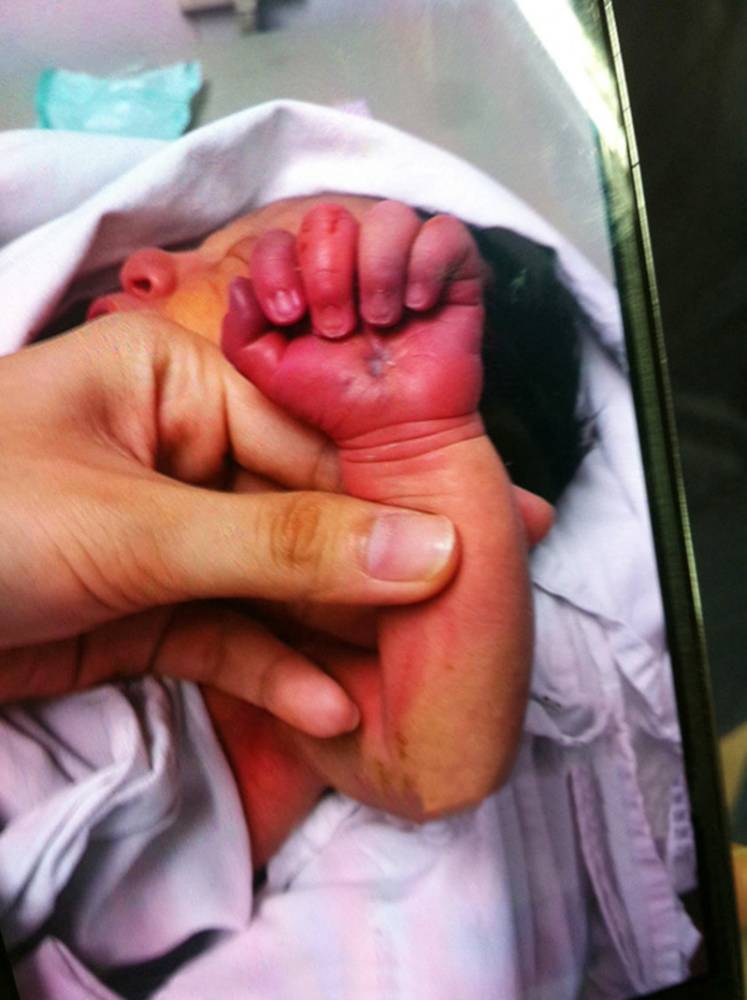When you’re pregnant, you’ll get an earful from friends, family, and even strangers about how things will go at your birth. But don’t believe everything you hear. Many of the most widely believed “facts” about giving birth are just plain wrong. For a reality check on how things will really go, take a gander at these 10 biggest myths about childbirth.
Wide Hips Make Labor Easier
While it sure seems like a baby would have an easier time passing through wide hips rather than narrow ones, science has shown that hip size is no crystal ball about how long or hard labor will be. “Hip size is meaningless,” says Teresa Van-Zeller, childbirth educator and author of Birthing As Nature Intended. The reason: “Baby’s head molds and mother’s hips widen to accommodate the birth. Like potted plants, the plant will only grow as big as the pot allows.”
Babies Past Their Due Date Pose Health Problems
First off, your baby may not be “late” at all, since your “due date” is just a rough estimate, says Van-Zeller — and your body will know when it’s time to get that baby out! That said, pregnancies two weeks past their due date could present complications like low amniotic fluid, so many doctors may induce labor at that point. But before then, provided there are no signs of distress, baby is totally fine.
Once a C-Section, Always a C-Section
In the past, getting a cesarean section meant your future births would also be cesareans. But today, improved surgical techniques have made it possible for women with previous C-sections to give birth vaginally later (called a VBAC). About 75 percent of women who attempt VBACs succeed in a vaginal birth.
Your Water Will Break at the Beginning of Labor
In spite of what we’ve seen in all the movies, that big gush of water that announces the onset of labor is rarely so dramatic. “Only 10 to 15 percent of women’s amniotic sacs will rupture on their own before contractions start and labor begins,” says Deena Blumenfeld, a certified childbirth educator in Pittsburgh, Pennsylvania, at Shining Light Prenatal Education. And even if this does happen, in many of these cases, it’s such a small trickle, women may miss it entirely.
An Epidural Will Alleviate All Your Pain
Sorry ladies, an epidural may dull your pain but probably won’t eliminate it entirely. Pushing that baby out is gonna hurt.
You’ll Love Your Baby As Soon As You Lay Eyes on Him
Sure, some women may claim it was “love at first sight,” but many also admit that those feelings of tenderness didn’t develop until later. This can make them feel unmotherly or worry they’re suffering from postpartum depression, but rest assured, it’s very common to not bond with baby right off the bat. “It’s normal to not love your baby right away,” says Blumenfeld. “The process is more gradual, similar to how we fall in love with our partners. You need time to get to know who this person is.” What’s more, postpartum depression is fairly rare, affecting about 9 to 16 percent women. Symptoms — which should persist for more than two weeks — include an inability to function in daily life, care for your baby, sleep, or enjoy things you once relished. If your symptoms fit that profile, you may want to seek help, but if you’re merely not swooning over your baby immediately, don’t worry! Give it some time.
After Birth, Your Breasts Instantly Fill With Milk
Baby’s out. And baby’s hungry! Only where’s the milk? Well, one frustrating fact is that baby’s favorite beverage may not be on tap immediately. “Breast milk takes around two to three days to come in,” says Blumenfeld. But before that point, you should still breastfeed because your breasts are already producing something even more valuable: colostrum, a thick, gooey substance that’s packed with high levels of fat, protein, and immunities for your baby. You may not even notice anything’s coming out, but it’s there, and it’s all baby needs, so don’t fret if you’re not overflowing yet.
After You Give Birth, You’ll Stop Looking Pregnant
Baby’s out — time to get your old body back. Well, not so fast. Your belly may take a while to fully deflate. “After you give birth, the uterus only shrinks to about 60 percent of its size to expel the placenta and control postpartum bleeding,” says Blumenfeld. After that, it’ll take another six weeks to shrink back down to its pre-pregnancy size — a process called “involution.” Bottom line: keep those elastic waistbands around.
Second Births Are Easier Than the First
Sure, it’s typically true that subsequent births are faster and easier, since your body has already been put through the process once — but that’s not always the case.







